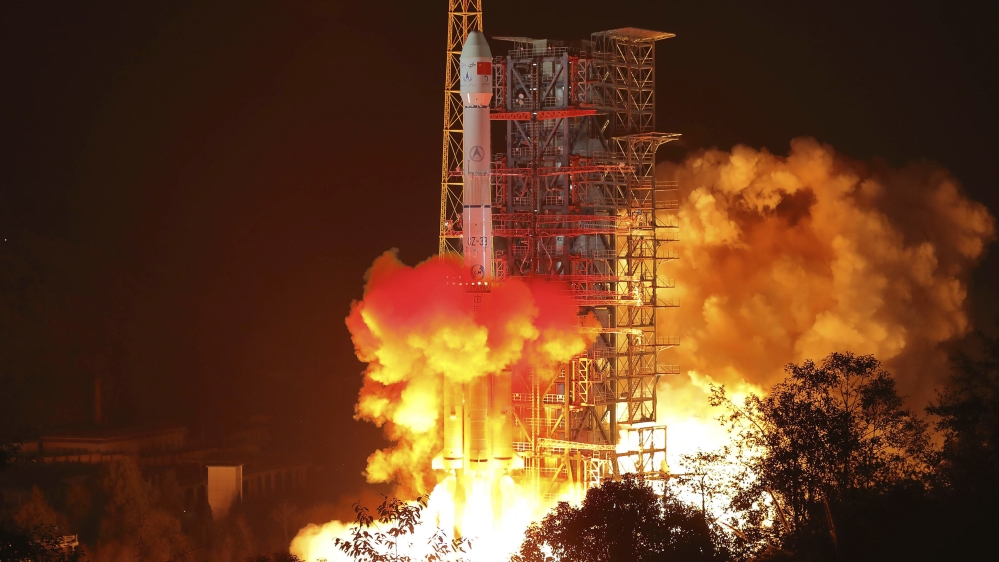Chinese probe Chang'e 4 lands on far side of moon: state media
Chang’e-4 lunar rover successfully touches down on the far side of the moon, becoming the first probe to do so.
A Chinese probe has made the first-ever landing on the far side of the moon, according to state media, in a groundbreaking mission in space exploration.
The unmanned Chang’e 4 spacecraft successfully touched down at 10:26am (02:26 GMT) on Thursday on a preselected landing area, state media said.
It relayed a photo of the “dark side” of the moon to the Queqiao satellite, which will relay communications between controllers on Earth and the far side of the moon.
The moon is tidally locked to Earth, rotating at the same rate that it orbits our planet, so the far side is never visible from Earth and relatively unexplored. Previous spacecraft have seen the far side of the moon but none has landed on it.
The soft landing “lifted the mysterious veil” from the far side of the moon and “opened a new chapter in human lunar exploration,” state media said.
The tasks of the Chang’e-4 include astronomical observation, surveying the moon’s terrain, landform and mineral composition, and measuring the neutron radiation and neutral atoms to study the environment on the far side of the moon, the China National Space Administration has said.
The probe, which includes a lander and a rover and is also equipped with a panorama camera, will perform radio-astronomical studies that, because the far side always faces away from Earth, will be “free from interference from our planet’s ionosphere, human-made radio frequencies and auroral radiation noise”, according to space industry expert Leonard David.
In 2015, NASA, the US space agency, released an animation that shows satellite images of the far side of the moon.
NASA says the images show the moon illuminated by the sun, as it crosses between the DSCOVR spacecraft’s Earth Polychromatic Imaging Camera and telescope, and the Earth – one million miles away.
‘Dark side’
The moon’s far side has a different composition than sites on the near side, where previous missions have landed.
The United States sent 12 astronauts between 1969 and 1972 to the Earth’s satellite.
The first Soviet probe, Luna 24, landed there in 1976. It wasn’t followed until 2013, when the first Chinese probe, the Chang’e 3, landed.
China plans to send its Chang’e 5 probe there next year and have it return to Earth with samples – the first time that will have been done since 1976. A crewed lunar mission is also under consideration.
China’s space programme has benefited from cooperation with Russia and European countries, although it was excluded from the 420-tonne International Space Station, mainly due to US concerns over transfer of technology that could be used for military purposes.
Its programme also suffered a rare setback last year with the failed launch of its Long March 5 rocket.
China conducted its first crewed space mission in 2003, making it only the third country after Russia and the US to do so.
It has put a pair of space stations into orbit, one of which is still operating as a precursor to a more than 60-tonne station that is due to come online in 2022. The launch of a Mars rover is planned for the mid-2020s.
Source: Read Full Article



